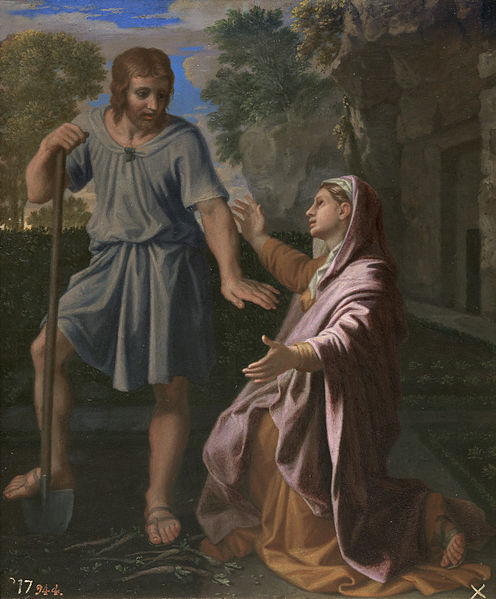From Mary Magdalene: Truth, Legends and Lies by Amy Welborn.
Chapter 2:
If you were making up the story of the Resurrection from scratch, you would, as a person living in the first century, in the Roman Empire, and presumably as a Jew, only be able to think about this resurrection business in the terms and concepts available to you. And, as N. T. Wright has so ably demonstrated in The Resurrection of the Son of God (Augsburg Fortress Publishers, 2003), even the first-century Jewish world, which did believe in a resurrection of the body, saw it in completely different terms — that it would eventually happen to everyone, at once, at the end of time (Wright, pp. 200-206).
And in general, when you read over the Resurrection accounts in the Gospels, you are immersed in an account in which people are afraid, confused, in awe, and eventually profoundly overjoyed. There is a veil drawn over the core event — the Resurrection itself is never described because, of course, none of the witnesses saw it.
They saw the empty tomb, and they saw the risen Jesus. A clever fabricator and mythmaker would not have woven his account with such nuance, and would probably have offered a direct account of the event itself, perhaps even with a clear explanation of what it all meant. But that’s not what we read, and somehow, ironically, all of the confusion and human frailty is powerful evidence for the truth of the account.
Most importantly for us, a first-century mythmaker would not have featured women as the initial witnesses of these formative events. It is inaccurate to say that first-century Jews did not accept women as reliable witnesses at all. There was, of course, no unified system of law within Judaism, and what was practiced was dependent upon which rabbi’s interpretation of the Law was used. Some rabbis did, indeed, hold the opinion that women were not reliable witnesses, but others disagreed and counted a woman’s witness equal to a man’s.
However, the fact that a woman’s reliability as a witness was disputed, unclear, and not consistently accepted, would, it seems, discourage a fabricator from using women as his source of information that the tomb was indeed empty. It certainly wouldn’t be the first choice to come to mind if your aim was to present a story that was easily credible, would it?
“[And] so that the apostles [the women] did not doubt the angels,Christ himself appeared to them,so that the women are Christ’s apostles and compensate through their obedience for the sin of the first Eve. . . . Eve has become apostle. . . . So that the women did not appear liars but bringers of truth, Christ appeared to the [male] apostles and said to them: It is truly I who appeared to these women and who desired to send them to you as apostles.” (Hippolytus, third century, quoted in Mary Magdalene: Myth and Metaphor, by Susan Haskins [Berkley, 1997], pp. 62-63)
